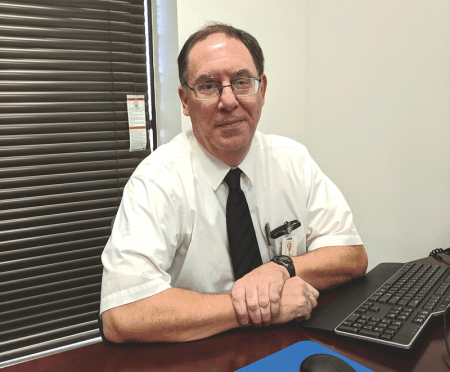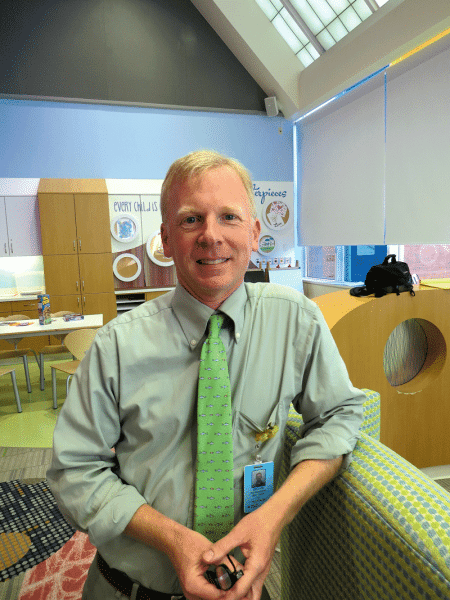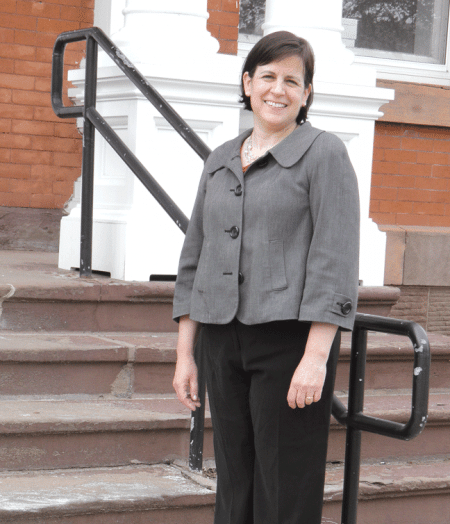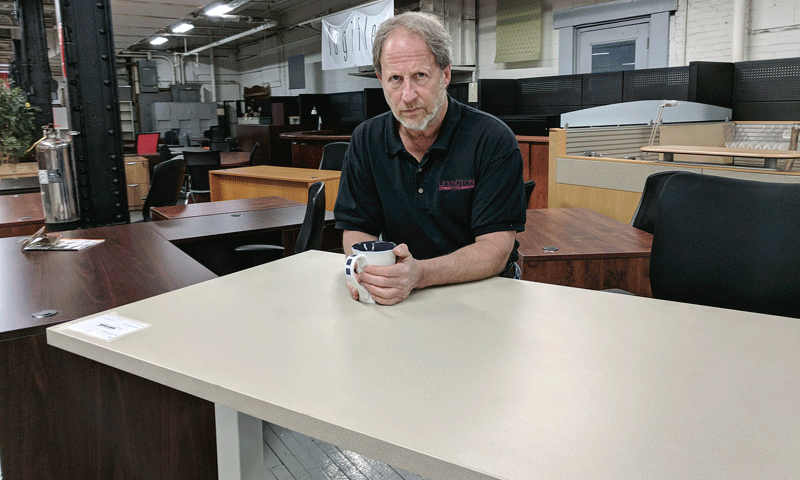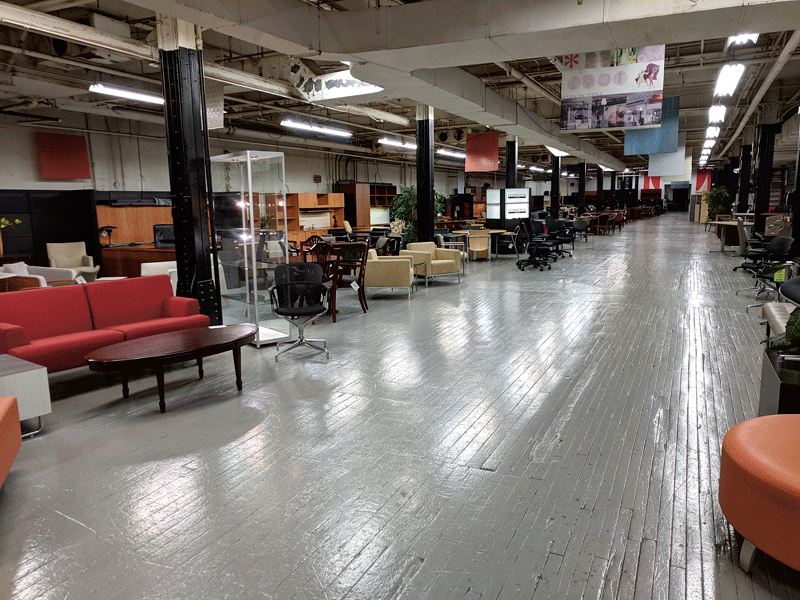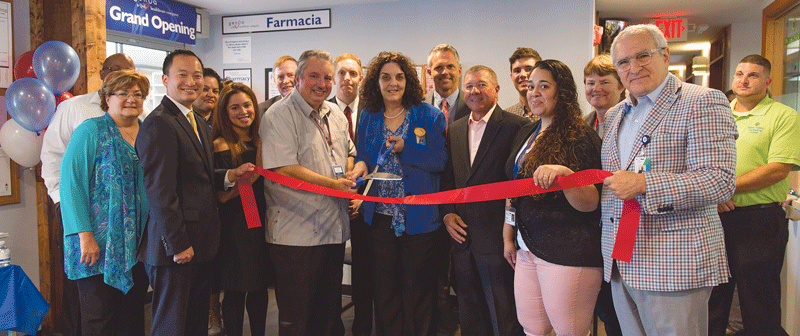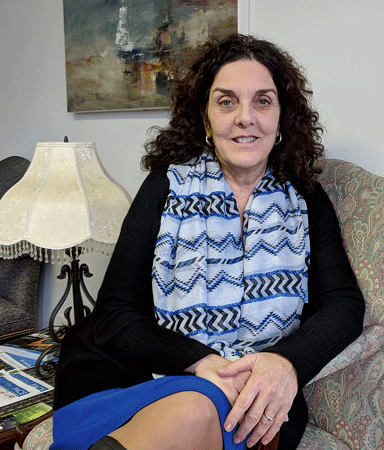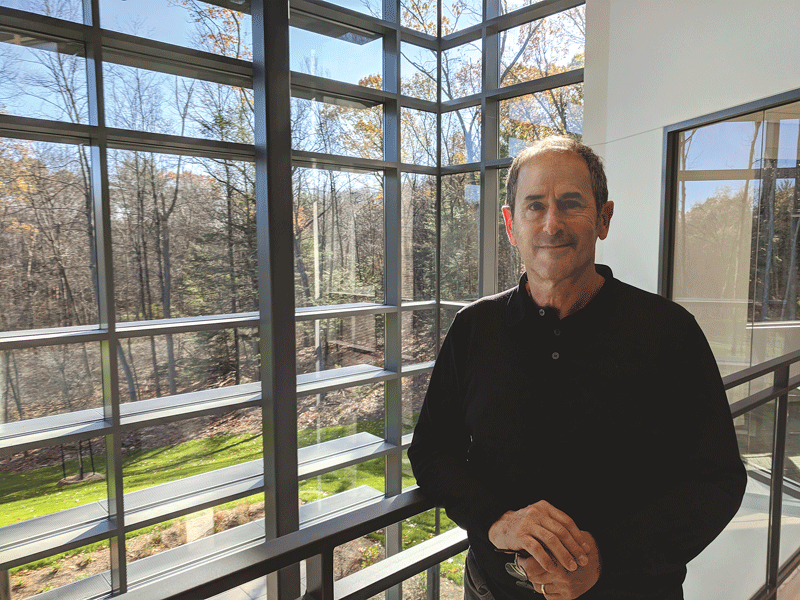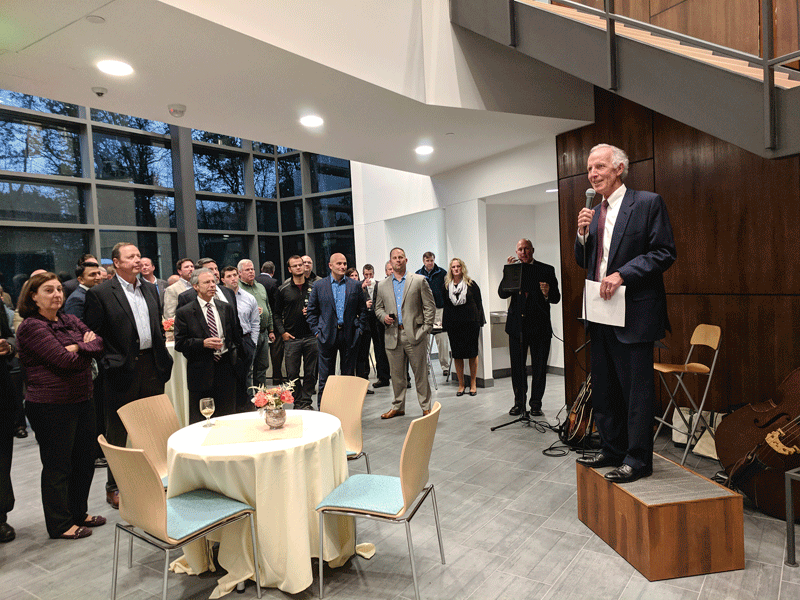Brush with Fame

Joe Ventura holds the cleat he made for Patriots defensive lineman Alan Branch for the ‘My Cleats, My Cause’ program.
The word ‘artist’ covers a lot of ground when talking about Joe Ventura. The Ludlow-based entrepreneur is lead singer for what’s considered the leading Bon Jovi tribute band in the country, and he custom airbrushes everything from hockey goalie helmets to cars and motorcycles. His latest canvas has become footwear, as in football cleats through the NFL’s ‘My Cleats, My Cause’ program. For Ventura, it’s a foothold, in every aspect of that word, into another business opportunity.
Joe Ventura was clearly proud of the colorful shoe he had just created for New England Patriots running back Rex Burkhead as part of the NFL’s ‘My Cleats, My Cause’ program.
But he understood that probably the most important touch, and easily the most poignant, would not come via his talented hand.
Indeed, these Nike cleats, size 12½, were to be shipped out to Atkinson, Neb. within a few days. There, they would be signed by Jack Hoffman, a truly inspirational 12-year-old with pediatric brain cancer who developed a special relationship with Burkhead while the latter was toting the rock for the University of Nebraska Cornhuskers.
That bond remains strong, and Team Jack, an initiative embraced by the Nebraska players to raise money for cancer research, is Burkhead’s choice when it comes to the ‘my cause’ part of the NFL’s popular new program, to be celebrated during the full slate of games set for the first week of December.
As for the cleats part, well, Ventura, a Ludlow-based artist, came to the attention of the Patriots, and eventually Burkhead, in a roundabout way we’ll get to in a minute. Joe V, as he’s known to friends and those who get a close-up look at his work — that’s how he signs his creations — is now working on cleats for a few representatives of the team.
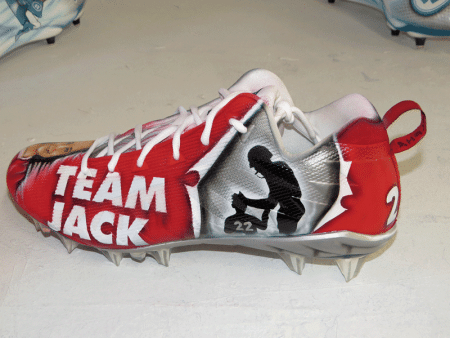
The cleat bound for Rex Burkhead’s locker will first be sent to Nebraska to be signed by the inspirational Jack Hoffman.
For Burkhead, he fashioned cleats that feature the words ‘Team Jack,’ a silhouette of the running back with Hoffman, and images of the boy from today and roughly four and half years ago, when, while wearing Burkhead’s number 22, he entered a Nebraska spring game and ran 69 yards for a touchdown.
For defensive lineman Alan Branch, who wears a size-16 shoe, Ventura had a little more real estate to work with, and took full advantage of it, fashioning a likeness of one of Branch’s daughters upon one of the cartoon characters used to promote his cause, FARE (Food Allergy Research & Education).
The cleats represent a new entrepreneurial and artistic beachhead for Ventura, who already had several — both on his résumé and on display in the workshop behind his Ludlow home. In addition to being lead singer for a Bon Jovi tribute band called Bon Jersey (yes, a guy nicknamed Joe V plays in a Bon Jovi tribute band), he is also an amateur dirt-bike racer and artist specializing in custom airbrush painting of everything from hockey goalie helmets to motorcycles to a few cars (including a Ford Mustang for one of the Patriots).
“I’ll paint … just about anything that can be painted,” he said, while scrolling through his phone for the photo of that Mustang, now featuring the famous Patriots logo. “I’m always looking for new opportunities, new things I can do.”
And while he’s certainly not limiting his sights to sports, he has always looked upon that realm as a fairly recession-proof niche for his venture.
“When I started this business, the first thing I thought of was, ‘what can I do if the market crashes so I can still do my job?’” he recalled. “The answer was sports.”
When asked what was in the business plan for Joe V Designs, Ventura gave a shrug of his shoulders as if to indicate that he wasn’t sure, exactly. But he hinted broadly that there would be more of everything already in the portfolio, and hopefully some new wrinkles.
That includes work for MGM Springfield, which is in talks with Ventura to create some murals for the $950 million casino set to open in less than a year. He has already fashioned a preliminary work — a scene, circa 1931, that depicts three Springfield motorcycle police officers with the entrance to the Indian Motocycle manufacturing facility in Mason Square in the background.
For this issue, BusinessWest talked at length with Ventura about his many forms of artistic expression — and entrepreneurial spirit — and about what might come next as he continues to fill in the canvas of an already-colorful career.
Signature Works
The orange Nike box declared that the sneakers inside were size 10, and the model was the Air Zoom Vomero 12.
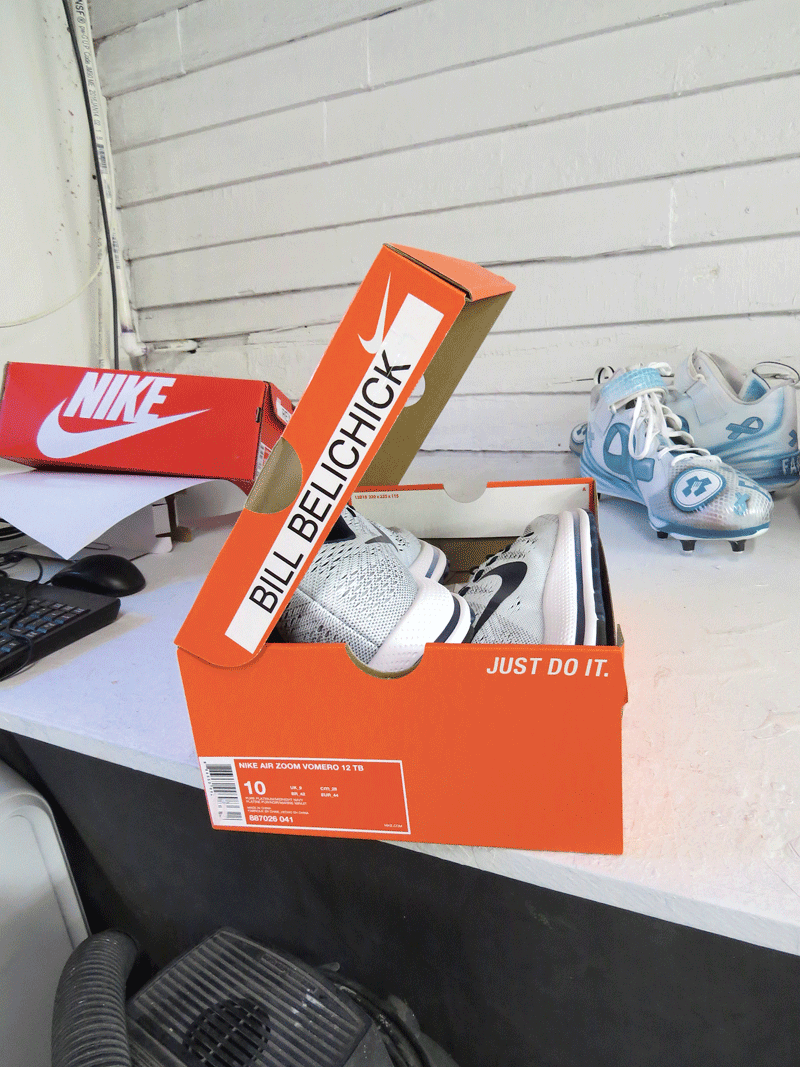
The name on the shoebox tells a big part of the story of how Joe Ventura is finding new opportunities to fill in the canvas of an already-colorful career.
But the two words typed on white tape across the side told the real story: Bill Belichick.
Indeed, the legendary coach is the third Patriots representative to engage Ventura in creating some shoes for ‘My Cleats, My Cause,’ only Belichick’s aren’t exactly cleats.
And Ventura wasn’t exactly sure what he was doing with those sneakers when he talked with BusinessWest much earlier this month. He was awaiting further instruction, as they say, and not from the coach himself.
“Bill wants a sketch of the shoe before I do it … he’s a little busy; it would be hard for him to stop what he’s doing to talk about a shoe,” deadpanned Ventura, adding that all he knew at that point was that he would be fashioning something that conveyed the Bill Belichick Foundation (BBF), which strives to provide coaching, mentorship, and financial support to individuals, communities, and organizations, and focuses on football and lacrosse.
And while Ventura is honored to be a client of the only coach to win five Super Bowls, and he did quickly put a picture of that Nike box with Belichick’s name on it up on his Facebook page, he doesn’t exactly get star-struck.
That’s because he’s worked with quite a few lights over the years. These are names that most casual sports fans might not know, but they are stars in their own galaxies nonetheless.
Like Jonathon Quick, goaltender for the NHL’s Los Angeles Kings, for whom Ventura has designed a number of masks. And Dwayne Roloson, a long-time NHL netminder who played for a host of teams. And John Muse, who played his college hockey at Boston College and now patrols the net for Lehigh Valley Phantoms of the American Hockey League.
Even less well-known are some of the dirt-bike stars for whom he’s created helmets. That list includes John Dowd, the former professional motocross racer from Chicopee also known as the ‘Junk Yard Dog’; Dowd’s son, Ryan; Robby Marshall; and many others.
Ventura creates several hundred hockey-goalie masks each year, including those for most major college programs — he’s one of only seven certified Bauer painters in the country — and he’s done a great deal of work in the motor-sports helmet realm as well.
And then, there are the Indian motorcycles, now made in Indiana, that he will custom-paint for clients.
“I’m all around, everywhere,” he said of both his work and where it ends up. “The hockey masks go all around the world, and I’ve handled all the custom work from Indian pretty much since they opened.”
Still, it was his other career, more than a quarter-century as lead singer for Bon Jersey, that ultimately paved the way for his work with ‘My Cleats, My Cause.’
“One of my fans from the band is Brad Berlin, the equipment manager for the Tampa Bay Buccaneers,” he recalled. “He was so into our music and what we did that he forgot what I did for a living. When they started ‘My Cleats, My Cause’ last year, they were frantic in Tampa trying to find artists; they had to go to California, one guy went to Maryland…
“Then, he remembered what I did for a living, and he sent me two sets of cleats that he wanted me to mock up, one for Tampa and one for New England,” he went on, adding that his mockup for the Pats — one that featured the team’s logo on a shoe that appeared to be made out of steel — obviously turned some heads.
Because, when Ventura went to the Patriots game against the Bucaneers in Tampa on Oct. 5, he got a sideline pass, met some players, and made some connections that turned into assignments.
He garnered the three mentioned above, plus defensive lineman Lawrence Guy and some of the team’s equipment personnel, and may get another for Brian Hoyer, the former Patriots quarterback now back with the team after the Jimmy Garoppolo trade. Also, he’s the unofficial go-to artist for anyone on the team who doesn’t have an artist.
Meanwhile, his contact information somehow got sent to the Buffalo Bills and, eventually, their equipment manager, who asked Ventura to create a few sets of cleats for their quarterback, Tyrod Taylor.
“From what the equipment manager told me, he took one look at them and said, basically, ‘I want this guy,’” said Ventura, adding that he’s awaiting some instructions from the player on what he’s looking for.
Different Strokes
Ventura likes to say that he lives in his backyard.
While that’s an exaggeration, it’s not far from the truth.
Indeed, the artist — that’s a phrase that covers a lot of territory, to be sure — spends large chunks of each day in a studio that can’t be seen from the street, provides no hint of the work going on inside, and is nondescript in almost every way. Except maybe when there’s a Nike box with Bill Belichick’s name on it on the work desk.
But it’s home — again, not literally, but for his growing business. And Ventura likes everything about it, especially the fact that no one knows it’s there.
“If I had a fancy storefront, I’d never get anything done,” he said, he said with a smile, noting that he doesn’t put an address on his colorful (what else would it be?) business card.
“There’s a phone number on there … if they want to find me, they can call me,” he said, adding that many people have, as evidenced by that deep and still-growing portfolio of work.
On the day BusinessWest visited, Ventura was referencing the recently completed left cleat bound for Nebraska, Jack Hoffman’s house, and, eventually, Burkhead’s locker.
This is the one with the image of a younger Hoffman, from when he was 7 or 8 years old. On the work bench was a photograph of the confident-looking 12-year-old, to be transferred onto the right cleat, which at that moment sported its basic white and black from the factory, with tape covering the cleats as Ventura prepared to go to work on it.
As he talked about Burkhead’s cleats, Ventura said that, like almost everything he does, this specific project is customized, and it tells a story — actually, several of them.
The first is the story the client wishes to tell, be it a reference to a nonprofit or something important enough to them to be painted on the chassis of a motorcycle. But there’s also Ventura’s story — specifically his attention to detail and desire to go above and beyond for the client.
Like with Burkhead. While what Ventura has done with the cleats is certainly creative and inspirational, the artist knew the crowning touch had to be a signature from Jack Hoffman.
And so he made those arrangements, with the signing to be videotaped and sent to Burkhead.
He also came up with the other design elements with little, if any, instruction beyond creating something that told the story of Team Jack.
“I had to do some research on it, and then my mind just starts to flow, and I come up with these ideas on how to do things,” he said, while giving ample credit to his partner, Jeff Ottomaniello, whom Ventura says he’s been training for the past 15 years.
The artist’s mindset came through when he was asked how long it took to create a cleat like the one bound for Nebraska.
“When you’re doing a portrait like that for a cleat, which is highly impossible, it could take a day to do that one cleat,” he explained. “But I don’t like to talk about how long it takes, because it’s not how much time it takes, it’s being able to create that image; it’s more of the passion of being able to do it.”
Where this passion will take him in the future is a question without a clear answer. Like the famous coach he’s creating shoes for, Ventura doesn’t get very emotional — or very detailed — when he talks about what comes next.
He didn’t say “on to Cincinnati,” but implied that it was on to whatever work his current portfolio — or even his work with Bon Jersey — might inspire.
“My favorite sport is football, and for me to be involved in this [cleats] program is pretty cool for me,” he told BusinessWest. “Once this is done, we’re going to make a portfolio and send it to each one of the teams in the NFL; knowing that we have some backing from the people we’ve done work for, it will be a little easier for people to see us and maybe get more of these.”
As for MGM, he said he’s now in talks with the company about creating murals depicting scenes from Springfield past and present. If that comes to fruition, he believes that high-profile work may open even more doors down the road.
Getting a Foothold
Ventura said he wasn’t at all sure what happens to the cleats worn during ‘My Cleats, My Cause’ week when those games over.
He suspects some of them may be auctioned off or given to the charities in question for display, but he doesn’t know their exact fate.
He does know that the cleats he created for the Patriots, the ‘steel’ shoes, will be put on display at the Patriots headquarters in Foxboro.
His ‘Joe V’ signature won’t be very visible, but the cleats, like all his work, including that with Bon Jersey, seemingly lead to additional opportunities.
In other words, he’s waiting for the other shoe to drop — literally and figuratively.
George O’Brien can be reached at [email protected]




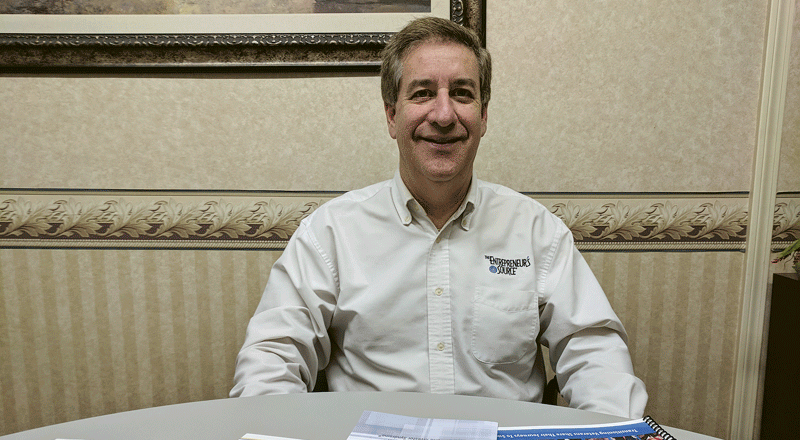
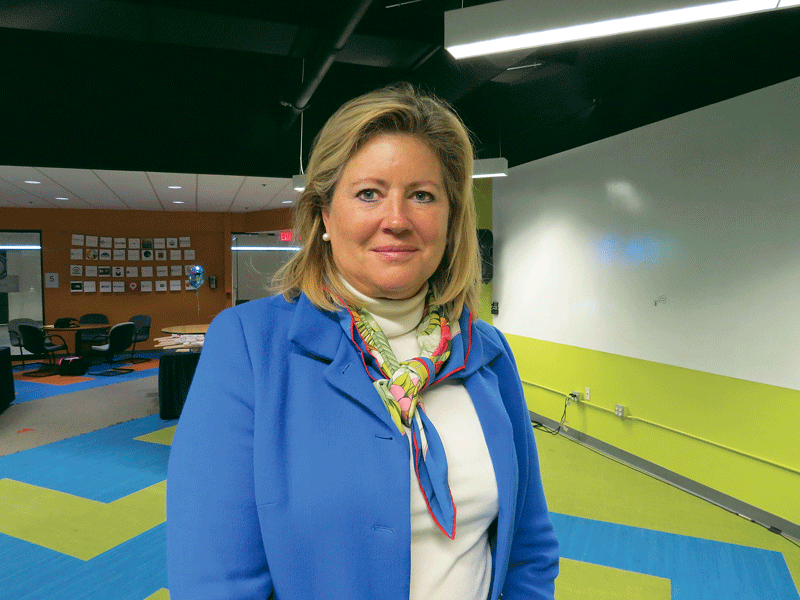

 In a nation where the vast majority of adults have a social-media presence, it’s not surprising that kids are clamoring to get in on the fun. But for teenagers, and especially the middle-school set, social media comes with its own set of additional traps, often magnifying and broadcasting incidents of peer pressure and bullying. There’s no real consensus on when kids should be allowed to use these ubiquitous tools, but experts agree that parents need to be involved in that decision — and well beyond.
In a nation where the vast majority of adults have a social-media presence, it’s not surprising that kids are clamoring to get in on the fun. But for teenagers, and especially the middle-school set, social media comes with its own set of additional traps, often magnifying and broadcasting incidents of peer pressure and bullying. There’s no real consensus on when kids should be allowed to use these ubiquitous tools, but experts agree that parents need to be involved in that decision — and well beyond.